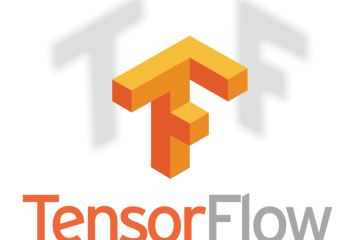Are you looking for a powerful, easy-to-use machine-learning library? Scikit-Learn is the perfect solution for you. This blog post will provide an overview of this popular library, from its features and advantages to its use cases and applications.
Introduction to Scikit-Learn
Scikit-Learn is a powerful machine-learning library for Python. It allows developers to quickly and easily create advanced predictive models with its wide selection of algorithms, parameters, and features. It supports both supervised and unsupervised learning, giving users the flexibility to work with either kind of data set. Scikit-learn also provides a consistent interface which makes it easy to use and understand, even for those new to the world of machine learning. Thanks to its easy installation process, users can get up and running in no time at all. With Scikit-Learn, developers can quickly build models that enable them to make accurate predictions and uncover valuable insights from their data.

Installation of Scikit-Learn
Installation of Scikit-Learn is easy and straightforward. To install it, you just need to have Python installed, as well as its scientific computing libraries such as NumPy and SciPy. Once this is done, you can install Scikit-learn using the Python package manager, pip. After installation, you can check your version of sci-kit-learn with the command line tool ‘sklearn’. This will give you information about your current version of it. Additionally, you can also check the documentation of the library to ensure that you have the latest version installed. Finally, you can use the library in your project by importing it into your code. With this library, you will be able to apply powerful machine-learning algorithms and models to your data for predictive analysis.
Applications of Scikit-Learn
Scikit-Learn is a powerful machine-learning library for Python that can be used in a variety of applications. It can be used for classification tasks such as spam detection and customer segmentation, as well as clustering tasks such as grouping experiment outcomes. Additionally, it can be used for predictive tasks such as forecasting sales or predicting stock prices. It also provides a selection of efficient tools for machine learning and statistical modeling including classification, regression, clustering, and dimensionality reduction. With Scikit-Learn users have access to a wide range of algorithms that can be used to solve complex problems in an efficient manner.
Supervised and Unsupervised Learning with Scikit-Learn
In the previous sections, we discussed how to install and use Scikit-Learn for machine learning. Now, let’s take a look at supervised and unsupervised learning with Scikit-Learn. Supervised learning is used to create models from labeled data with the correct answer, which can then be used to make predictions. Unsupervised learning is used to identify patterns in data without labels and can be used for clustering and dimensionality reduction. This provides various algorithms for supervised and unsupervised learning, including linear regression, logistic regression, decision trees, k-means clustering, and more. Data preprocessing is an important step before using supervised or unsupervised learning models in Scikit-Learn, as it helps optimize the performance of the model.
Common Algorithms in Scikit-Learn
Scikit-learn has a wide range of algorithms for supervised and unsupervised machine learning. In supervised learning, popular algorithms include Support Vector Machines, Decision Trees, and Random Forests. In unsupervised learning, k-means clustering and spectral clustering are among the most used algorithms. Each of these algorithms has its own advantages and disadvantages and their usage depends on the data available. Data preprocessing is also a key step in machine learning and Scikit-learn offers many tools to help with this task. Finally, model evaluation and hyperparameter tuning are important steps in finding the best model for a given dataset. Scikit-learn provides tools to help with this process as well.

Model Evaluation with Scikit-Learn
Model Evaluation is an important step in machine learning, and Scikit-Learn makes it easy to evaluate and compare models. Scikit-Learn provides tools for many supervised and unsupervised learning algorithms, including methods for evaluating model performance and hyperparameter tuning. You can make predictions on new data using the predict() method and assess the accuracy of a model through cross-validation. Additionally, this includes metrics for evaluating clustering tasks, allowing users to compare different models and choose the best one for the task at hand. With the help of Scikit-Learn, users can easily evaluate machine learning models and get one step closer to finding the perfect solution.
Cross Validation
A machine learning technique, cross-validation, assesses the performance of a model. Scikit-Learn is a powerful machine-learning library that provides an easy-to-use interface for performing cross-validation. The K-fold cross-validation approach divides the data into several folds, and trains and evaluates the model multiple times on different partitions of the data. This allows for an accurate assessment of the model’s performance as it takes into account all the training data. Additionally, the library provides tools. Such as Grid Search and Hyperparameter tuning.

Hyperparameter Tuning
Hyperparameter tuning is an essential part of the machine learning pipeline, and this provides tools for tuning model hyperparameters. With Scikit-Learn, users can choose between a variety of algorithms and data preprocessing techniques to optimize their models. This also offers a variety of model evaluation methods. As well as methods for cross-validation that can help users choose the best hyperparameter values for their models. With all these tools in its arsenal. This makes it easy for users to get the most out of their machine-learning models.
Conclusion
In conclusion, Scikit-Learn is a compelling and versatile machine-learning library that is free and open-source. It contains a wealth of algorithms for clustering and prediction. And classification tasks, as well as a large number of tuning parameters for each algorithm. Data preprocessing and model evaluation are also available for users to make the most of their data. Furthermore, hyperparameter tuning and cross-validation help to further refine the models created with Scikit-Learn. With so many options available, it is an invaluable tool in any machine learning practitioner’s arsenal.


